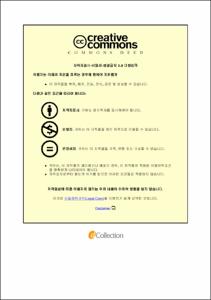Characterization and Encapsulation of Oils Extracted from Citrus (Citrus junos) By-products using Supercritical Carbon Dioxide
- Alternative Title
- 초임계 이산화탄소를 이용하여 추출한 유자 부산물 오일의 특성 분석 및 캡슐화
- Abstract
- 유자를 음료 및 기타 제품으로 가공하는 것은 세계에서 가장 큰 가공 산업 중 하나이다. 이 산업에서 발생되는 부산물(유자 껍질과 씨)은 가공되지 않은 과일의 약 50 %이다. 이는 잠재적 가치의 자원을 낭비할 뿐만 아니라 처분의 문제를 야기한다. 이러한 부산물은 건강에 이로운 생리활성 화합물을 다량 포함하고 있기 때문에 유용한 자원으로 전환될 수 있다. 이러한 목적을 위해 초임계 이산화탄소를 이용하여 유자 부산물로부터 추출 된 오일을 분석하고, 가치를 부가하기 위해 캡슐화하였으며, 이는 식품, 의약품, 향수 및 화장품 산업과 같은 많은 분야에서 오일을 사용할 수 있다.
첫 번째 연구에서는 헥산과 초임계 이산화탄소를 이용하여 유자 씨(Citrus Seed, CS)와 유자 껍질(Citrus Peels, CP)의 혼합물에서 추출한 오일의 특성을 연구하였다. SC-CO2 추출 조건은 온도 45 °C와 60 °C, 압력 200 bar와 250 bar이었으며, 헥산 추출은 70 °C에서 진행되었다. 헥산 추출물은 SC-CO2 추출물보다 유의적으로 높은 오일 수율을 보였다 (p<0.05). 화학 성분은 GC-MS로 분석하였으며, phytosterols, monoterpenes, sesquiterpenes 및 oxygenated monoterpenes가 오일의 주요 화합물로 확인되었다. 지방산 조성은 GC에 의해 측정되었고 linoleic acid가 주요 지방산임을 확인하였다. 산화 안정성 분석은 Rancimat법에 의해 수행되었고 헥산으로 추출한 오일은 초임계 이산화탄소로 추출한 오일에 비해 높은 산화 안정성을 보였지만, DPPH 및 ABTS 분석법으로 시험한 항산화 활성은 초임계 이산화탄소 추출 오일이 헥산 추출 오일 보다 높은 소거 활성을 나타내었다.
두 번째 연구의 목적은 초임계 이산화탄소를 약간 변형하여 사용함으로써 얻은 CS와 CP 및 혼합물 오일의 생리활성 화합물, 항산화 및 항균 활성을 조사하는 것이다. 추출 조건은 순수 초임계 이산화탄소 및 에탄올을 보조용매로 한 초임계 이산화탄소를 이용하며, 45℃에서 200와 300 bar의 압력이었다. 수율은 압력이 올라감에 따라 유의적으로 증가함을 보였다 (p < 0.05). CP 오일은 더 높은 총 페놀 함량을 보였으나, 총 플라보노이드 함량은 CS 오일이 더 높았다. 토코페롤과 피토스테롤 함량은 HPLC를 사용하여 분석하였고, α-토코페롤과 시토스테롤이 각각 추출 된 오일의 주요 화합물인 것을 확인하였다. 항산화 활성은 DPPH 및 ABTS 분석으로 측정되었고, DPPH 결과 CP 및 혼합물을 200 bar에서 초임계 이산화탄소 + 에탄올로 추출한 오일은 0.52 및 0.53 mg/ml의 IC50 값으로 높은 활성을 보였다. 항균 활성에 대해 혼합물 오일은 다른 오일에 비해 높은 활성을 나타내었고, 그람 음성 균보다 그람 양성 균에 더 민감했다.
세 번째 연구는 PGSS 공정을 이용하여 유자 오일-미립자의 형성, 특성화 및 방출 특성을 다루었다. 유자 오일은 PGSS 공정으로 폴리에틸렌글리콜(PEG)에 캡슐화되었다. 프로세스 조건, 즉 압력, 온도 및 오일/폴리머 혼합비의 영향이 입자의 특성 및 캡슐화 효율에 미치는 영향을 분석하였다. 입자크기 분석 결과, 190.56 내지 373.32 ㎛ 범위의 크기를 갖는 입자가 얻어졌으며, 캡슐화 효율은 43.95 ~ 83.87 % 범위였고 공정 변수에 의존적으로 변하였다. 배양액의 저장 온도와 pH에 따라 산화 안정성과 in vitro 방출이 각각 크게 변화하였으며, 캡슐화에 의해 산화 안정성이 유의적으로 향상되었다.
- Issued Date
- 2017
- Awarded Date
- 2017. 8
- Type
- Dissertation
- Publisher
- 부경대학교
- Affiliation
- 부경대학교 대학원
- Department
- 대학원 식품공학과
- Advisor
- Prof. Byung-Soo Chun
- Table Of Contents
- List of Tables iii
List of Figures iv
Abstract vi
Chapter 1 1
General Introduction 1
1.1. Background 1
1.1.2. Citrus fruit description and worldwide production 1
1.1.3. Bioactive compounds of citrus peels and seeds 2
1.1.4. Sample of study (Citrus junos) 3
1.2. Supercritical fluids (SFs) 6
1.2.1. Properties of SFs 6
1.2.2. Supercritical carbon dioxide (SC-CO2) 9
1.2.3. SC-CO2 for polymer processing 10
1.3. Objectives of the thesis 14
1.4. References 15
Chapter 2 18
Comparison of Characteristics of Oils Extracted from a Mixture of Citrus Seeds and Peels using Hexane and Supercritical Carbon Dioxide 18
2.1. Introduction 18
2.2. Materials and methods 20
2.2.1. Chemicals 20
2.2.2. Plant material 20
2.2.3. Sample preparation 20
2.2.4. Extraction procedure 21
2.2.5. Fatty acids composition determination by Gas chromatography 24
2.2.6. The chemical composition of extracted oils by GC-MS 24
2.2.7. Physical properties 24
2.2.8. Oil quality and stability 25
2.2.9. Antioxidant activity determination 25
2.2.10. Statistical analysis 26
2.3. Results and discussion 26
2.3.1. Yield of extracted oils 26
2.3.2. Fatty acid composition 30
2.3.3. The chemical composition of extracted oils 32
2.3.4. Physical properties 35
2.3.5. Oil quality and stability 35
2.3.6. Antioxidant activity 39
2.4. Conclusion 42
2.5. References 42
Chapter 3 48
Bioactive Compounds, Antioxidant and Antimicrobial Activity of Oils obtained from a Mixture of Citrus Peels and Seeds using a Modified Supercritical Carbon Dioxide 48
3.1. Introduction 48
3.2. Materials and methods 50
3.2.1. Chemicals 50
3.2.2. Sample collection and preparation 50
3.2.3. Extraction procedure 51
3.2.4. Determination of total phenolic content 53
3.2.5. Determination of total flavonoid content 53
3.2.6. Tocopherol content 53
3.2.7. Phytosterol content 54
3.2.8. Antioxidant activity determination 54
3.2.9. Antimicrobial activity 55
3.2.10. Statistical analysis 56
3.1. Results and discussion 56
3.3.1. Yield of extracted oils 56
3.3.2. Total phenolic and total flavonoid content 60
3.3.3. Tocopherol and phytosterol content 65
3.3.4. Antioxidant activity 69
3.3.5. Antimicrobial activity 74
3.4. Conclusion 79
3.5. References 79
Chapter 4 88
Formation, Characterization and Release Behaviors of Citrus Oil-Polymer Micro-particles using PGSS Process 88
4.1. Introduction 88
4.2. Materials and methods 89
4.2.1. Materials 90
4.2.2. Oil extraction 90
4.2.3. Microencapsulation process 90
4.2.4. Characterization of micro-particles 92
4. 2.5. In Vitro Release of micro-particles 93
4. 2.6. Statistical analysis 93
4. 3. Results and discussion 94
4. 3.1. Encapsulation efficiency 94
4. 3.2. Particle size 95
4.3.3. Bulk density, tap density, Carr index and wettability 96
4.3.4. Oxidative stability 99
4.3.5. In-Vitro release 102
4.4. Conclusion 105
4.5. References 105
Abstract (In Korean) 110
Acknowledgement 112
- Degree
- Master
- Files in This Item:
-
-
Download
 Characterization and Encapsulation of Oils Extracted from Citrus (Citrus junos) By-products using Su.pdf
기타 데이터 / 1.71 MB / Adobe PDF
Characterization and Encapsulation of Oils Extracted from Citrus (Citrus junos) By-products using Su.pdf
기타 데이터 / 1.71 MB / Adobe PDF
-
Items in Repository are protected by copyright, with all rights reserved, unless otherwise indicated.